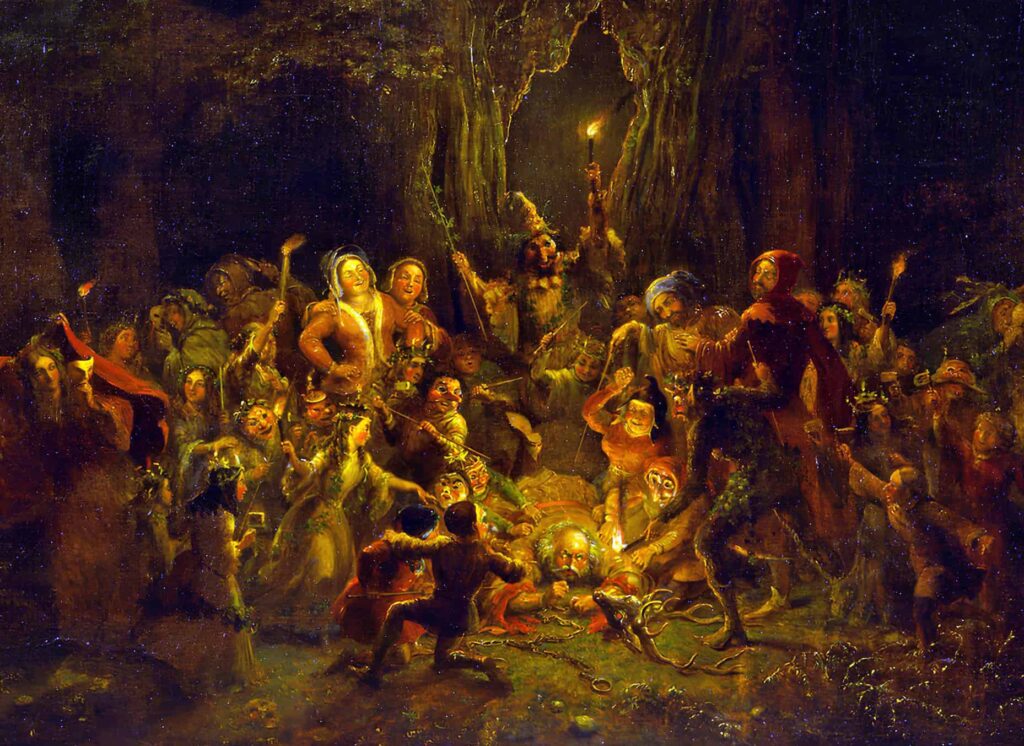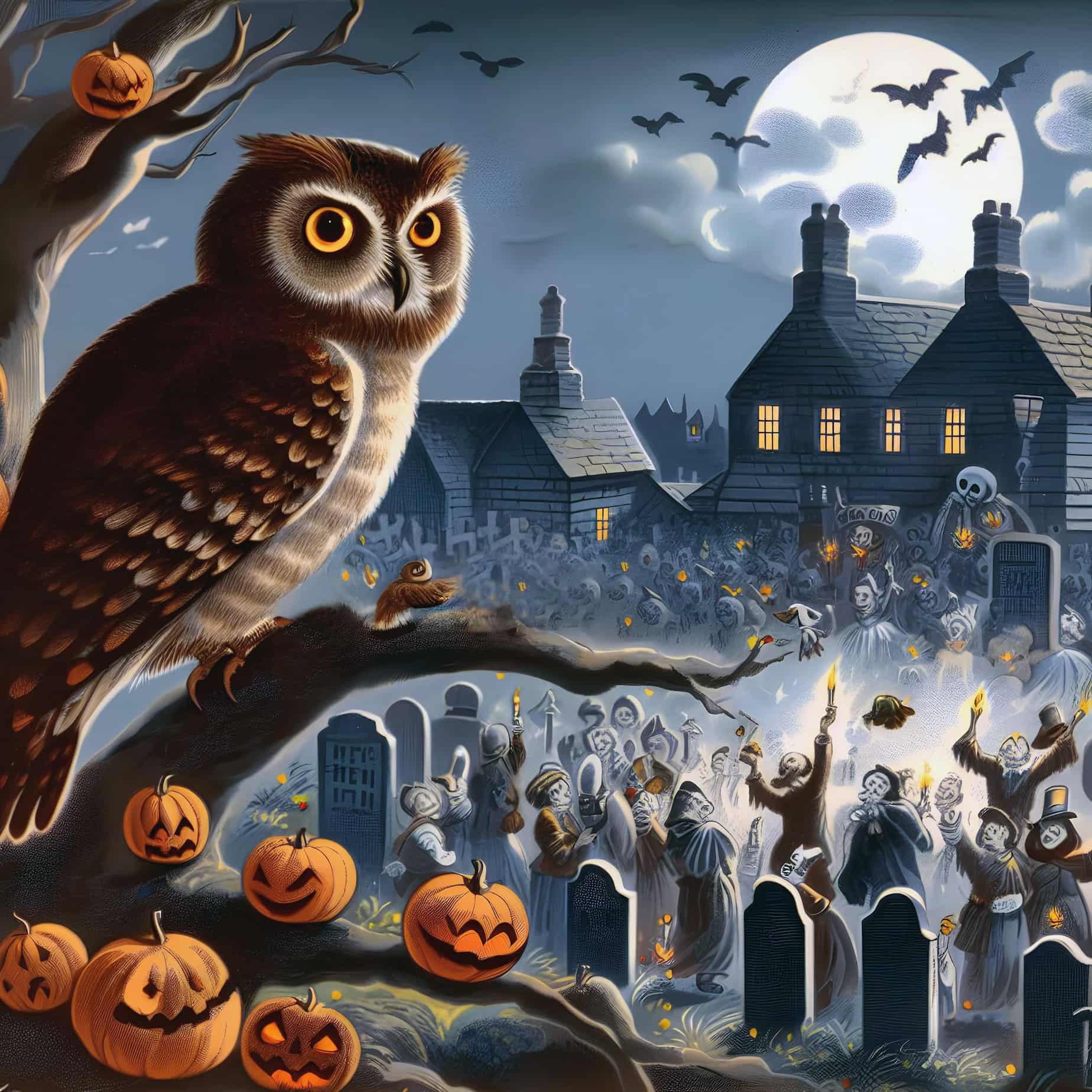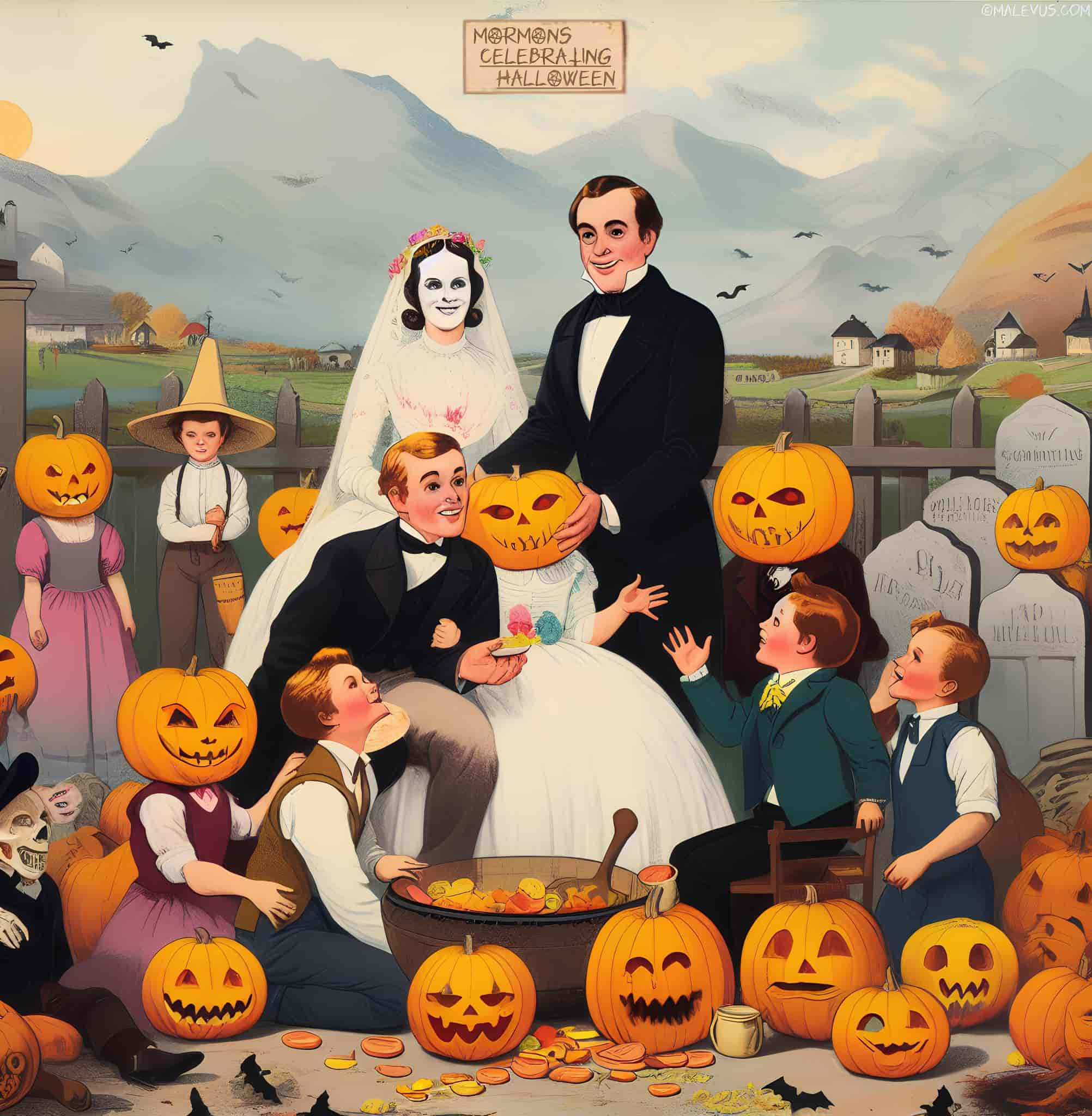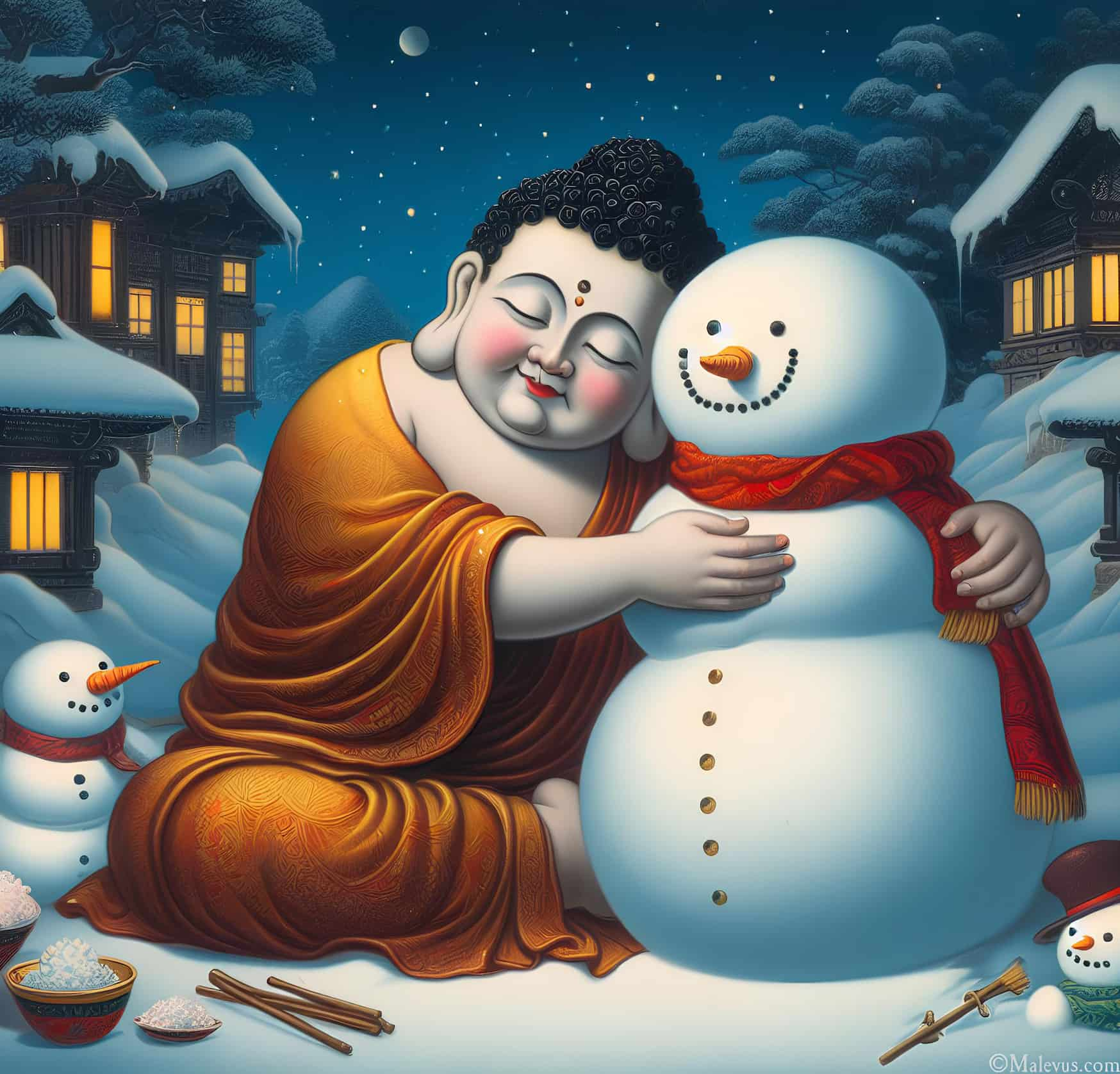Many nations celebrate Halloween on October 31, and the owl is a very important symbol of it. Since the Middle Ages, owls have been a continuous symbol of Halloween, which evolved from All Hallows’ Eve, when the dead would rise from their graves and haunt the streets. There are at least two reasons why owls are associated with Halloween. The first factor is related to ancient Celtic mythology, while the other is related to ancient Greece and Rome.
The owl was associated with the soul in ancient mythologies.
Samhain, a Nocturnal Festival

The Celtic harvest feasts and festivities are the main source of the owl’s place in Halloween lore. Before Halloween was ever a thing, there was Samhain. This festival dates back 2000–3000 years. On the day of Samhain, October 31, people thought the veil between the living and the dead was at its lowest point and ghosts began wandering the land. Due to their nocturnal nature and air of mystery, owls were often seen as intermediaries between the living and the dead.
During this Celtic New Year, when the spirits emerged from their graves to haunt the living, the owls were often mistaken for these spirits, silently flying around the forest and graveyards. However, Celtic people at the time also saw owls as guardians of the underworld, nighttime rulers, and clairvoyants.
During Samhain night, owls would descend from the sky and feast on the spirits of the departed. The hooting of an owl at midnight was a death omen. In fact, it was thought that terrible news was on the way if an owl was seen circling during the day. Now, you can’t keep something like this from becoming a Halloween theme.
Owl in Greek and Roman Mythology
The Greeks and the Romans are also responsible for some of the first allusions linking owls to Halloween. They often held the owl in high regard. In ancient Greece, the owl called Athene noctua was strongly associated with Athena, the goddess of strategic combat, bravery, and wisdom. It was considered a holy and trusted advisor to the Greek goddess. The ability of owls to see clearly at night was formerly thought to come from some kind of internal light. Armies would take these birds into combat with them.
The hooting of an owl was seen as a portent or a divine messenger by the ancient Romans. Myth has it that Minerva (or Athena) was able to see the complete truth thanks to an owl (the owl of Minerva) perched on her blind side. The owl was thought to represent the afterlife and people associated the animal with the spirit of the deceased.
The Influence of Pagan Traditions on Romans
The Roman legions were constantly on the move across the ancient world. Especially in times of conflict, they would take owl sightings seriously as warnings of impending disaster. Since the British Isles were a site where animistic pagan faiths were popular, it is possible that Druid beliefs were integrated when the Romans invaded the northern British Isles many times since Julius Caesar‘s first landing in Kent in 55 BC.
Not everything was in good light with owls. In his ten-volume encyclopedia “Natural Histories,” Pliny the Elder characterized the owl as a bird of the funereal and a portent of doom whenever it appeared in public. In addition, he said that “when it appears, it foretells nothing but evil” and called the owl “the very monster of the night.”
While Pliny acknowledged the dangers of owls, he also thought that, when correctly treated, owl viscera might restore health and cure pain. A useful remedy for an earache, for instance, is an elixir made of owl brain and oil that is inserted straight into the ear canal. These mythical attributes later contributed to the owl’s association with Halloween.
Three Factors That Link Owls to Halloween
Thus, the owls have become a Halloween symbol because of their associations with wisdom, mystery, and the occult in ancient times:
- Paranormal: Like witches, owls are nocturnal animals with a history of being linked to the paranormal. They roam the skies at night doing nefarious acts.
- Nocturnal Animals: Scariness is heightened by the owl’s reputation as a dangerous, nocturnal, aerial predator.
- Moon Cycles: The moon is a well-recognized Halloween symbol, and owls are linked to the moon’s cycles. They communicate differently when the moon is full (or new).
How Owls Became Associated with Halloween
Full Moon
The full moon is a prominent symbol of Halloween since owls are known to be more active at this time of the month. They are nocturnal creatures that are attracted to the glow of the moon, which accounts for their increased activity after dark. The unique hoots of owls are shown to increase in volume and speed up on moonlit evenings, according to studies of owl communication. The ancient people, not acquainted with owl activity, interpreted these noises as ghostly, and these animals have always been more common in isolated, rural regions. As a festival held at night, it makes sense to associate the owls with Halloween.
Witchcraft
In both Greek and Roman mythology, owls represent the underworld and the things to be feared. Like black cats, they were considered a sign of witchcraft throughout the Middle Ages. Many spells call for their feathers, eyeballs, or even the pellets they regurgitate. They are affixed to doorframes as a protective measure against misfortune. The barn owl (Tyto alba), which exists in most of the world, was a particular target of this misconception, which survived until the 19th century. Its eerie screech and quiet flight struck fear into the hearts of many.
Strictly Nocturnal
Owls are strictly nocturnal, so you can expect to see them flying about at night. Since owls are most active in the evening and night, Halloween is a holiday that coincides with their waking hours. The predatory owls served as inspiration for the Strix, an ill-omened owl of ancient mythology that feared to prey on people at night.
There are several historical and cultural roots behind the owl’s traditional role as a Halloween symbol. Their nocturnal habits, quiet flight, and haunting sounds made them a scary creature. With so many common attributes of owls in different cultures, the owl has inevitably become a symbol of Halloween.
During the Halloween season, they are utilized as decorations. It is not uncommon to see stuffed owls and other owl-themed decorations around houses. They are commonly used to increase the eeriness and tension of Halloween tales and films.
The Symbolism of the Owl in Other Cultures
By investigating the symbolism of owls in different cultures, you can better understand why they are associated with Halloween.
The most prominent themes in owl mythology are death, metamorphosis, and reincarnation. Owls have symbolized the unknown spiritual world that lies beyond the cover of night, as well as supernatural signals, spiritual messages, and shapeshifters.
- Greek and Roman mythologies: The owl was often associated with the virgin goddess of knowledge, Athena, in Greek mythology or with her syncretic incarnation, Minerva, in Roman mythology. The owl was a western emblem of knowledge, intelligence, perspicacity, and erudition. This animal was thought to represent the soul.
- In Native American tradition, the owl is a symbol of wisdom and foresight, and its whistle is seen by the Cree as a spiritual cry to the other side. Dreaming of an owl was seen as a portent of impending death by the Apache. The Eastern Screech Owl served as an adviser to the Cherokee on matters of punishment and illness.
- In Christian symbolism, the owl stands for mystery and the unknown. In the Bible, owls are depicted as unclean or evil. Many people thought that seeing an owl was a foreboding omen that portended further trouble ahead.
- In Judaism, owls are often used to indicate the end of a civilization or the beginning of its decline and decay, an attribute similar to the spooky nature of Halloween.
Other Animals Associated with Halloween
Animals, both real and fictional, have long been linked to Halloween’s spooky vibe. These creatures add to the holiday’s eerie atmosphere with their one-of-a-kind qualities and rich history. Some of the most well-known are:
- Black cats: They have been linked to the Halloween holiday since medieval times. They were called “familiars” because witches kept them as continuous companions, guardians, and helpers in their magical work.
- Rats: Due to their nocturnal habits and historical link with sickness and death, rats, and especially black rats, are often associated with Halloween.
- Bats: Bram Stoker’s Dracula, published in 1897, is largely responsible for associating bats with Halloween. The vampires in the book are able to hide their bloodthirsty activities by transforming into bats at night.
- Spiders: Halloween is generally linked with spiders because of their creepy, crawly nature and the elaborate webs they spin. Many associate them with dark and dangerous things.
- Ravens: The dark color of ravens and their historical connection with death and the occult make them a popular symbol.
Conclusion
Throughout history, owls have been used as a religious emblem in a wide variety of faiths and civilizations. Wisdom, knowledge, transformation, the cultivation of intuition, faith in the unknown, and openness to new experiences were all concepts linked to them. The appearance of an owl could be a sign that you should trust your gut. They were divine visitors with knowledge of the mysteries of life and the means to navigate them.






